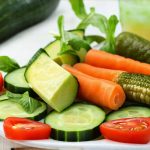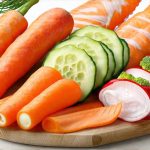Recovering from a viral stomach bug – often referred to as gastroenteritis – is rarely a pleasant experience. The relentless nausea, vomiting, diarrhea, and abdominal cramps can leave you feeling utterly drained and depleted. While most viral stomach bugs resolve on their own within a few days to a week, the period after the acute symptoms subside requires careful attention to diet and hydration to ensure full recovery and prevent relapse. Simply resuming your normal eating habits too quickly can often prolong discomfort or even trigger a return of unpleasant symptoms. This is because your digestive system has been significantly stressed and needs time to heal and rebuild its natural function.
The key during this post-illness phase isn’t about restrictive dieting, but rather about gradual reintroduction of foods that are gentle on the gut. It’s a process of listening to your body and understanding what it can tolerate as it slowly recovers. This means prioritizing easily digestible options, staying well hydrated, and avoiding anything that might further irritate your sensitive system. Remember that everyone reacts differently; what works for one person may not work for another, so pay close attention to how you feel with each food you introduce. This article will provide a comprehensive guide on how to safely navigate the transition back to normal eating after recovering from a viral stomach bug, focusing on practical steps and considerations.
Rehydrating & The BRAT Diet – A Starting Point
Rehydration is arguably the most crucial aspect of recovery. Vomiting and diarrhea lead to significant fluid loss, potentially causing dehydration which can exacerbate symptoms and hinder healing. Water should be your primary focus, but electrolyte solutions (like those designed for rehydration after exercise) can also be incredibly beneficial in replenishing lost minerals like sodium, potassium, and magnesium. Sipping small amounts of clear fluids frequently is much more effective than trying to gulp down large quantities at once, which could trigger nausea. Consider options such as:
- Water
- Clear broth (chicken or vegetable)
- Weak tea (ginger or chamomile can be soothing)
- Oral rehydration solutions
The BRAT diet – Bananas, Rice, Applesauce, and Toast – has long been a recommended starting point for dietary recovery after gastrointestinal distress. These foods are bland, low in fiber, and easy to digest, minimizing stress on the digestive system. However, it’s important to understand that the BRAT diet is not meant to be sustained long-term. It lacks essential nutrients and should only serve as a temporary bridge until you can gradually introduce more varied foods. The goal isn’t simply sticking to these four foods; it’s using them as a foundation for slowly expanding your dietary intake.
While the BRAT diet provides a gentle starting point, modern recommendations often suggest broadening this initial phase slightly. Adding plain crackers (saltines are good), cooked cereals like oatmeal (made with water, not milk initially), and boiled potatoes can offer additional nutrients and variety without overly taxing the digestive system. The emphasis remains on bland and easily digestible options. Remember to continue sipping fluids even while you’re eating these foods, as dehydration is a significant concern. If bloating persists, consider reading calm stomach for additional strategies.
Gradually Expanding Your Diet
Once you’ve tolerated the BRAT diet (or its slightly expanded version) for 12-24 hours without experiencing any worsening symptoms, it’s time to cautiously begin expanding your dietary intake. This should be done gradually, introducing one new food at a time and observing how your body responds. Start with small portions and monitor for any signs of discomfort – nausea, bloating, gas, or diarrhea. If you experience any of these symptoms after introducing a new food, remove it from your diet and revert to what you were previously tolerating.
The next tier of foods to introduce should include those that are still relatively easy on the stomach but offer more nutritional value than the BRAT options. Good choices include:
- Plain yogurt (unsweetened, potentially probiotic-rich)
- Cooked vegetables (steamed carrots, green beans) – avoid cruciferous vegetables initially as they can be gas-producing
- Lean protein sources (boiled chicken breast, fish)
- Soft fruits (peaches, pears) – avoiding highly acidic options
Patience is key during this phase. Don’t rush the process. It may take several days or even a week to fully restore your normal diet. Listen to your body and prioritize foods that you can comfortably tolerate. If you find yourself feeling anxious about reintroducing foods, remember that slow and steady progress is far more important than pushing yourself too quickly. In cases of discomfort after overeating, learning ease symptoms can be helpful.
Foods to Avoid During Recovery
Just as there are foods you should include during recovery, there are also many you should actively avoid. These are generally foods that can irritate the digestive system or potentially worsen symptoms. Highly processed foods, those high in fat, and those containing lactose (dairy) are common culprits. Specifically, avoid:
- Fatty/fried foods
- Spicy foods
- Caffeine
- Alcohol
- Dairy products (initially – you may be able to reintroduce yogurt later)
- Highly acidic foods (citrus fruits, tomatoes)
- Sugary drinks and sweets
- Greasy or heavily seasoned foods
These foods can all contribute to digestive upset and hinder the healing process. Even if you normally tolerate these foods without issue, your digestive system is in a vulnerable state after a stomach bug and will be more sensitive than usual. Avoiding them temporarily allows your gut to rest and recover fully. The goal isn’t necessarily permanent elimination, but rather temporary avoidance during this critical recovery phase. If you’ve had a recent dietary slip-up, calm your stomach is a useful resource.
Listening to Your Body & Seeking Medical Advice
The most important aspect of recovering from a viral stomach bug is paying attention to your body’s signals. Every individual responds differently, so there’s no one-size-fits-all approach. If you find yourself consistently struggling with certain foods or experiencing prolonged symptoms despite following these guidelines, it’s crucial to seek medical advice. Signs that warrant a doctor’s visit include:
- Severe dehydration (dizziness, decreased urination)
- High fever
- Blood in your stool or vomit
- Inability to keep down fluids for more than 24 hours
- Persistent abdominal pain
These symptoms could indicate a more serious underlying condition or complication. Remember that this information is not intended as a substitute for professional medical advice. It’s always best to consult with a healthcare provider if you have any concerns about your health or recovery. If digestive issues are chronic, it’s important to differentiate GERD from other conditions. Furthermore, understanding how to reset your gut can aid in long-term digestive health. Ultimately, a gradual and mindful approach to refeeding, coupled with adequate hydration and rest, will set you on the path toward a full and comfortable recovery after a viral stomach bug.


















